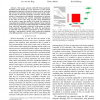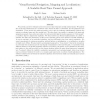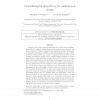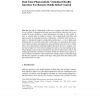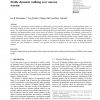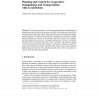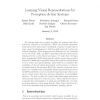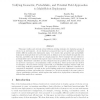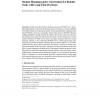131
click to vote
IJRR
2011
14 years 4 months ago
2011
— This paper presents LQG-MP (linear-quadratic Gaussian motion planning), a new approach to robot motion planning that takes into account the sensors and the controller that will...
144
Voted
IJRR
2011
14 years 8 months ago
2011
Abstract People typically move and act under the constraints of an environment, making human behavior strongly place-dependent. Motion patterns, the places and the rates at which p...
103
Voted
IJRR
2011
14 years 8 months ago
2011
We present a model to estimate motion from monocular visual and inertial measurements. We analyze the model and characterize the conditions under which its state is observable, an...
91
Voted
IJRR
2011
14 years 8 months ago
2011
118
click to vote
IJRR
2011
14 years 8 months ago
2011
The task of teleoperating a robot over a wireless video link is known to be very difficult. Teleoperation becomes even more difficult when the robot is surrounded by dense obstac...
129
click to vote
IJRR
2011
14 years 8 months ago
2011
We propose a constructive control design for stabilization of non-periodic trajectories of underactuated robots. An important example of such a system is an underactuated “dynam...
127
click to vote
IJRR
2011
14 years 8 months ago
2011
We consider the problem of controlling multiple robots manipulating and transporting a payload in three dimensions via cables. Individual robot control laws and motion plans enable...
111
click to vote
IJRR
2011
14 years 8 months ago
2011
We discuss vision as a sensory modality for systems that effect actions in response to perceptions. While the internal representations informed by vision may be arbitrarily compl...
111
click to vote
IJRR
2011
14 years 8 months ago
2011
This paper unifies and extends several different existing strategies for deploying groups of robots in an environment. A cost function is proposed that can be specialized to rep...
139
click to vote
IJRR
2011
14 years 8 months ago
2011
Abstract Partially observable Markov decision processes (POMDPs) are a principled mathematical framework for planning under uncertainty, a crucial capability for reliable operation...
